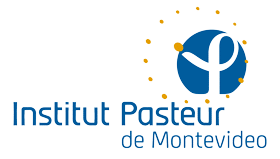Bioinformatics
Bioinformatics is the application of computational and statistical techniques for the analysis of data of biological origin, which also includes its organization and storage as well as the development of tools to manage them.
The volume of data currently generated by sequencing techniques promotes a constant development of methods to deal efficiently with numerous genomes and proteomes, without losing sight of the biologically relevant data.
At the Bioinformatic Unit we apply various tools to the comparative study of genomes on a global scale, as well as specific families of genes and proteins. Historically we have focused on bacteria, human pathogens and the human genome. We have also developed specific tools to deal with the new methodological challenges posed by the information explosion. These applications and developments have a place in genetics and biomedicine, and most recently in metagenomics, the genomic characterization of environmental samples.
Members
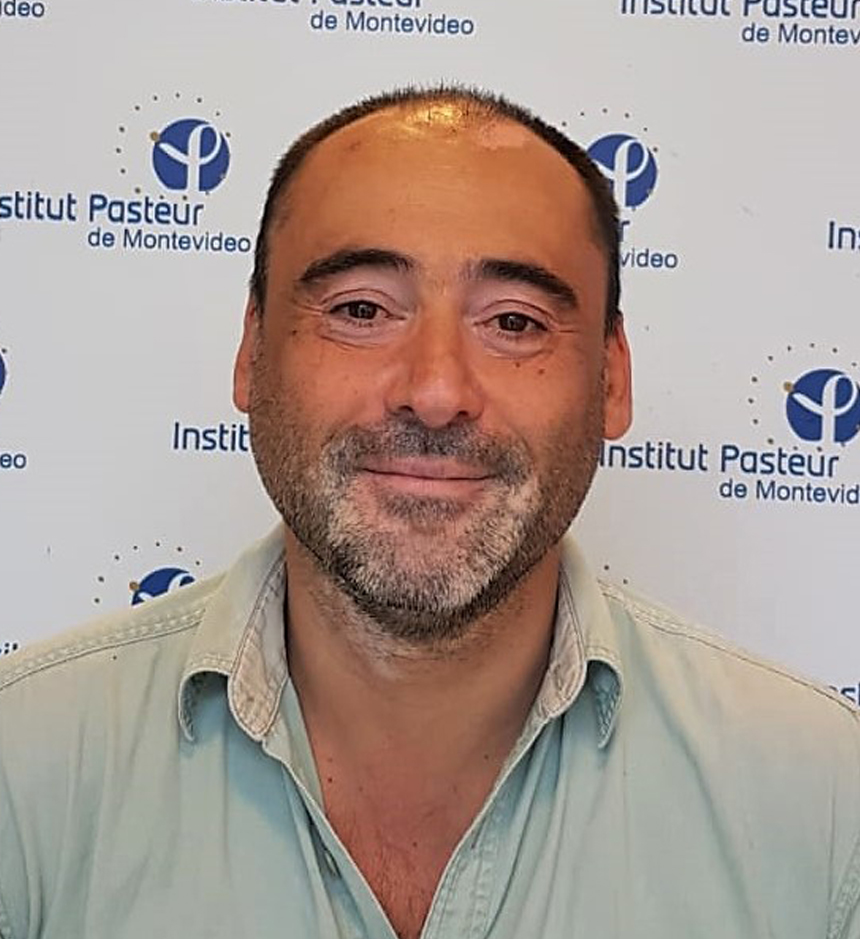



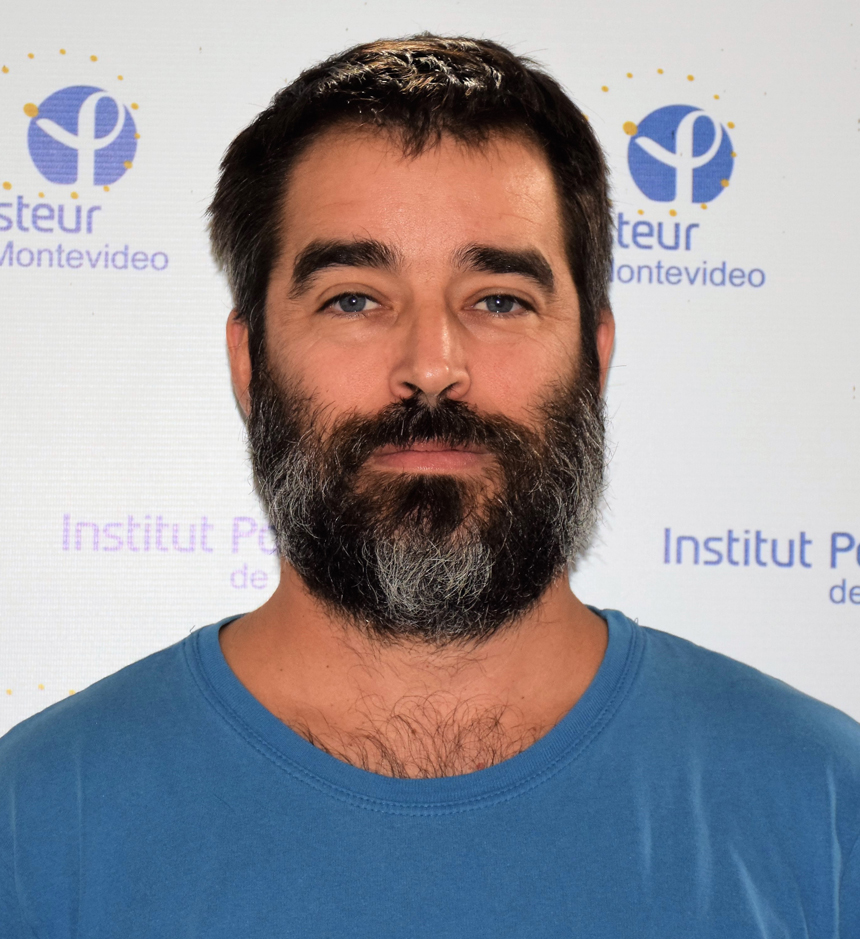
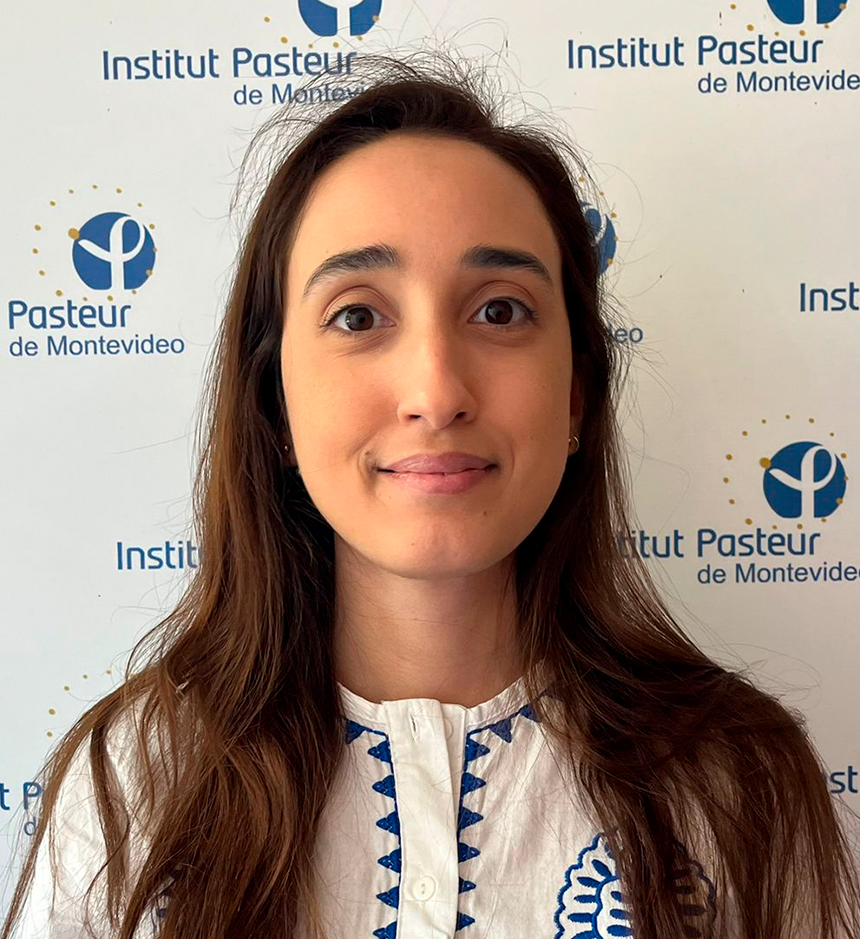





Rosina Comas, Clin. Biochem.
Master's degree student
Faculty of Chemistry, Udelar
comas@pasteur.edu.uy

Lucía Sosa
Undergraduate Thesis Student

María Inés Fariello, PhD
Honorary research associate
Faculty of Engineering, Udelar
fariello@pasteur.edu.uy
Daniel Gianola, PhD
Honorary research associate

María Pía Pérez
Intern
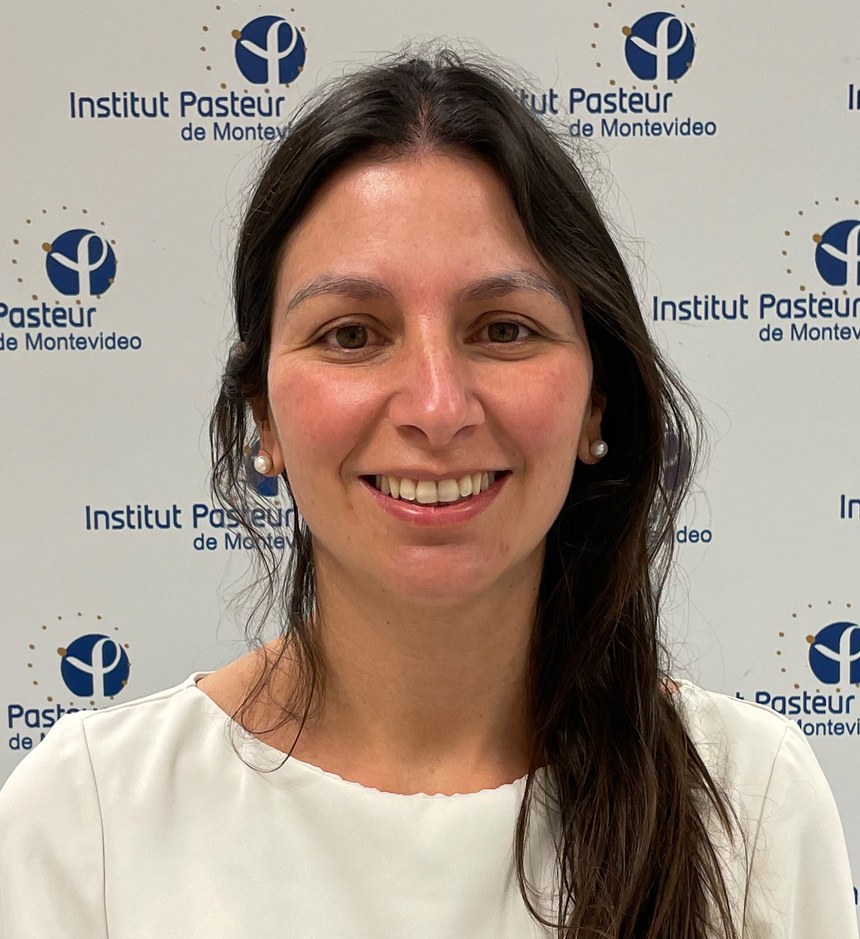
Tamara Fernández, BSc
Reserach assitant
tamfer@pasteur.edu.uy
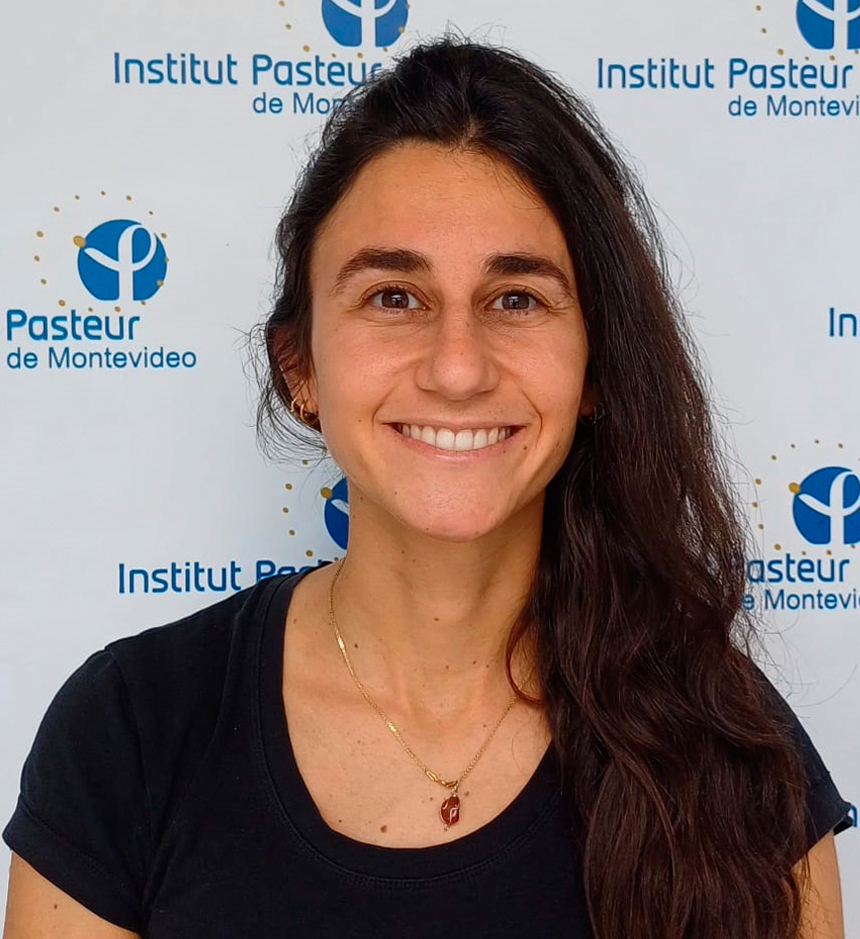
Nicole Kiedanski, BSc
Master's degree student

Sofia Gonzales, BSc
Master's degree student
Research lines
Human genomics
The URUGENOMES project seeks to create local capacities in the area of human genomics and especially medical genomics. In this context, 50 genomes were sequenced, which are being analyzed from the point of view of population genomics (ancestry), and 30 other genomes of patients with rare diseases, which are analyzed in the context of medical genomics.
Human transcriptomics
One of the areas in which the unit specializes is human transcriptomics. Several projects are currently being developed within this line. One of them is dedicated to the study of differentiation processes of stem cells to different cell types (adipogenesis, osteogenesis and cardiomyogenesis). Of special interest is the post transcriptional regulation that takes place during these processes. Another project within this research line aims to analyze the response of human cells to the infection of pathogens of different origins.
Structural bioinformatics
We seek to exploit data on protein structures, generated by X-ray crystallography and other techniques (NMR, cryo-electromicroscopy), in the functional understanding of protein families. Using three-dimensional structures and genomic sequences often provides clues about the function of a protein and, sometimes, generates functional hypotheses about whole families of ‘hypothetical’ genes (genes without known function).
Genomics and microbial evolution
It seeks to understand the evolution of pathogens that affect livestock and domestic animals using phylodynamics; and fundamentally the discovery of the evolutionary forces that shape the genomes of zoonotic bacteria such as Campylobacter, Leptospira and Mycobacterium. Among the ongoing projects within this line, there is currently a Latin American joint effort to study the population dynamics of Clostridium difficile using genomic epidemiology approaches. Recently, one of the projects of this line seeks to analyze the dynamics of resistance to antibiotics in enterobacteria of urban environments through the application of metagenomics.
Statistical genetics and its application to evolution
Services
NGS and microarrays data analysis:
- Genome Assembly
- Variant analysis
- Transcriptomic and ribosomal profile analyses
- Small RNAs data analysis
- Sequence alignment and phylogenetic inference
Biostatistics and advice on specific software usage
Metagenomic data analyses and experimental design
Courses
- Dissemination conference of Genomics applied to Medicine. May 4, 2018. Organizer: Hugo Naya. Funded by: Banco Interamericano de Desarrollo, proyect ATN/KK-14584-UR.
- Course “Introduction to Medical Genomics”. March 5-9, 2018. Institut Pasteur de Montevideo. Organizer: Hugo Naya. Funded by: Banco Interamericano de Desarrollo, proyect ATN/KK-14584-UR.
- Genomic Medicine Conference. December 18-19, 2017. Institut Pasteur de Montevideo. Organizer: Hugo Naya. Funded by: Banco Interamericano de Desarrollo, proyect ATN/KK-14584-UR.
- “Hands on Metagenomics data analysis: tools for bioprospection in – environmental and clinical microbiology”. September 25 – October 6, 2017. Funded by: UNU BIOLAC, Cooperación francesa, CAMPUS FRANCE y FOCEM.
- “Deciphering regulator RNA functions by high-throughput sequencing”. December 4-8, 2017. Funded by: UNU BIOLAC, FOCEM, and private sponsors.
Projects
2018-2019 – “Tools development for the analysis of Uruguayan human genomes”. ANII. Lucía Spangenberg, María Inés Fariello.
2016-2018 – “Identification of microRNAs regulating infection of human cells by Listeria monocytogenes”. PROGRAMMES TRANSVERSAUX DE RECHERCHE – PTR Institut Pasteur. Javier Pizarro-Cerdá (H Naya)
2014-2017 – “Strengthening technical and human capacities for genomic services exports”. Funded by: Banco Interamericano de Desarrollo, proyect ATN/KK-14584-UR. Responsible: Hugo Naya.
2014-2015 – “Estrogen receptor: Functional tissue-specific characterization of synonymous polymorphisms and translational kinetics in human cells”. Fondo Clemente Estable ANII Responsible: Tamara Fernández
2016 – “Modulation of the ubiquitin-proteasome system by electrophiles and oxidants: study of molecular networks”. Fondo Clemente Estable ANII . Responsibles: Horacio Botti, Colaboradores: Gregorio Iraola, Álvaro Cabana, Martín Hugo, Marcelo Hill.
2016 – “Genomic evolution of Mycobacterium avium paratuberculosis in wild and production animals”. Fondo Clemente Estable ANII. Responsible: Pablo Fresia Colaboradores: Gregorio Iraola, Ignacio Ferres, Hugo Naya, Fernando Paolicci (INTA)
2017-2019 – Metagenomic Project – ANII (Gregorio Iraola)
2012-2015 – “Investigation of two Genetic and Molecular Mechanisms in Biofilmes of Leptospira”. CAPES Brazil funds. Responsibles: A Schnadelbach/P Ristow. Participant: H Naya
2013-2015 “Transcriptional analysis in Leptospires forming biofilms”. ANII funds. Responsible: H Naya.
Main publications
vacio
2018
- Spangenberg L, Graña M, Mansilla S, Martínez J, Tapié A, Greif G, Montano N, Vaglio A, Gueçaimburú R, Robello C, Castro L, Quijano C, Raggio V, Naya H. Deep sequencing discovery of causal mtDNA mutations in a patient with unspecific neurological disease. Mitochondrion. 2018 Sep 15. pii: S1567-7249(18)30008-4. doi: 10.1016/j.mito.2018.09.004. [Epub ahead of print] PubMed PMID: 30227252.
- Robert AW, Angulski ABB, Spangenberg L, Shigunov P, Pereira IT, Bettes PSL, Naya H, Correa A, Dallagiovanna B, Stimamiglio MA. Gene expression analysis of human adipose tissue-derived stem cells during the initial steps of in vitro osteogenesis. Sci Rep. 2018 Mar 16;8(1):4739. doi: 10.1038/s41598-018-22991-6. PubMed PMID: 29549281; PubMed Central PMCID: PMC5856793.
- Rodrigo-Muñoz JM, Cañas JA, Sastre B, Rego N, Greif G, Rial M, Mínguez P, Mahíllo-Fernández I, Fernández-Nieto M, Mora I, Barranco P, Quirce S, Sastre J, Del Pozo V. Asthma diagnosis using integrated analysis of eosinophil microRNAs. Allergy. 2018 Jul 24. doi: 10.1111/all.13570. [Epub ahead of print] PubMed PMID: 30040124.
- Iraola G, Kumar N. Surveying what’s flushed away. Nat Rev Microbiol. 2018 Jun 21. doi: 10.1038/s41579-018-0047-7. [Epub ahead of print] PubMed PMID: 29930288.
- Thibeaux R, Girault D, Bierque E, Soupé-Gilbert ME, Rettinger A, Douyère A, Meyer M, Iraola G, Picardeau M, Goarant C. Biodiversity of Environmental Leptospira: Improving Identification and Revisiting the Diagnosis. Front Microbiol. 2018 May 1;9:816. doi: 10.3389/fmicb.2018.00816. eCollection 2018. PubMed PMID: 29765361; PubMed Central PMCID: PMC5938396.
- Thibeaux R, Iraola G, Ferrés I, Bierque E, Girault D, Soupé-Gilbert ME, Picardeau M, Goarant C. Deciphering the unexplored Leptospira diversity from soils uncovers genomic evolution to virulence. Microb Genom. 2018 Jan;4(1). doi: 10.1099/mgen.0.000144. Epub 2018 Jan 3. PubMed PMID: 29310748; PubMed Central PMCID: PMC5857368.
- Puche R, Ferrés I, Caraballo L, Rangel Y, Picardeau M, Takiff H, Iraola G. Leptospira venezuelensis sp. nov., a new member of the intermediate group isolated from rodents, cattle and humans. Int J Syst Evol Microbiol. 2018 Feb;68(2):513-517. doi: 10.1099/ijsem.0.002528. Epub 2017 Dec 14. PubMed PMID: 29239713.
- Grecco S, Iraola G, Decaro N, Alfieri A, Alfieri A, Gallo Calderón M, da Silva AP, Name D, Aldaz J, Calleros L, Marandino A, Tomás G, Maya L, Francia L, Panzera Y, Pérez R. Inter- and intracontinental migrations and local differentiation have shaped the contemporary epidemiological landscape of canine parvovirus in South America. Virus Evol. 2018 Apr 9;4(1):vey011. doi: 10.1093/ve/vey011. eCollection 2018 Jan. PubMed PMID: 29657837; PubMed Central PMCID: PMC5892152.
- Lasserre M, Fresia P, Greif G, Iraola G, Castro-Ramos M, Juambeltz A, Nuñez Á, Naya H, Robello C, Berná L. Whole genome sequencing of the monomorphic pathogen Mycobacterium bovis reveals local differentiation of cattle clinical isolates. BMC Genomics. 2018 Jan 2;19(1):2. doi: 10.1186/s12864-017-4249-6. PubMed PMID: 29291727; PubMed Central PMCID: PMC5748942.
- Ferrés I, Iraola G. MLSTar: automatic multilocus sequence typing of bacterial genomes in R. PeerJ. 2018 Jun 15;6:e5098. doi: 10.7717/peerj.5098. eCollection 2018. PubMed PMID: 29922519; PubMed Central PMCID: PMC6005169.
- Pita S, Diaz-Viraque F, Iraola G, & Robello C. The Tritryps comparative repeatome: insights on repetitive element evolution in Trypanosomatid pathogens. 2018 BioRxiv, 387217.
- Ferrés I, & Iraola G. Phylen: automatic phylogenetic reconstruction using the EggNOG database. 2018 J Open Sour Softw, 10.21105/joss.00593.
- Guillén-Nepita AL, Negrete-Paz AM, Vázquez-Marrufo G, Cruz-Hernández A, Fresia P, Naya H, Vázquez-Garcidueñas MS. Sequencing and Annotation of the Genome of Mycobacterium tuberculosis MYC004, a Strain Causing Meningitis in Mexico. Genome Announc. 2018 Jun 21;6(25). pii: e00523-18. doi: 10.1128/genomeA.00523-18. PubMed PMID: 29930042; PubMed Central PMCID: PMC6013621.
2017
- Cáceres A, Muñoz I, Iraola G, Díaz-Viraqué F, Collado L. Campylobacter ornithocola sp. nov., a novel member of the Campylobacter lari group isolated from wild bird faecal samples. Int J Syst Evol Microbiol. 2017 Jun;67(6):1643-1649. doi: 10.1099/ijsem.0.001822. Epub 2017 Jun 20. PubMed PMID: 28126040.
- Calleros L, Betancor L, Iraola G, Méndez A, Morsella C, Paolicchi F, Silveyra S, Velilla A, Pérez R. Assessing the intra-species genetic variability in the clonal pathogen Campylobacter fetus: CRISPRs are highly polymorphic DNA markers. J Microbiol Methods. 2017 Jan;132:86-94. doi: 10.1016/j.mimet.2016.11.012. Epub 2016 Nov 17. PubMed PMID: 27867047
- Dallagiovanna B, Pereira IT, Origa-Alves AC, Shigunov P, Naya H, Spangenberg L. lncRNAs are associated with polysomes during adipose-derived stem cell differentiation. Gene. 2017 Apr 30;610:103-111. doi: 10.1016/j.gene.2017.02.004. Epub 2017 Feb 7. PubMed PMID: 28185860.
- Fresia P, Jara R, Sierra R, Ferrés I, Greif G, Iraola G, Collado L. Genomic and clinical evidence uncovers the enterohepatic species Helicobacter valdiviensis as a potential human intestinal pathogen. Helicobacter. 2017 Oct;22(5). doi: 10.1111/hel.12425. Epub 2017 Aug 11. PubMed PMID: 28799681.
- Iraola G, Forster SC, Kumar N, Lehours P, Bekal S, García-Peña FJ, Paolicchi F, Morsella C, Hotzel H, Hsueh PR, Vidal A, Lévesque S, Yamazaki W, Balzan C, Vargas A, Piccirillo A, Chaban B, Hill JE, Betancor L, Collado L, Truyers I, Midwinter AC, Dagi HT, Mégraud F, Calleros L, Pérez R, Naya H, Lawley TD. Distinct Campylobacter fetus lineages adapted as livestock pathogens and human pathobionts in the intestinal microbiota. Nat Commun. 2017 Nov 8;8(1):1367. doi: 10.1038/s41467-017-01449-9. PubMed PMID: 29118316; PubMed Central PMCID: PMC5678084.
- Luna F, Naya H, Naya DE. Understanding evolutionary variation in basal metabolic rate: An analysis in subterranean rodents. Comp Biochem Physiol A Mol Integr Physiol. 2017 Apr;206:87-94. doi: 10.1016/j.cbpa.2017.02.002. Epub 2017 Feb 4. PubMed PMID: 28179141.
- Naya DE, Naya H, Cook J. Climate change and body size trends in aquatic and terrestrial endotherms: Does habitat matter? PLoS One. 2017 Aug 16;12(8):e0183051. doi: 10.1371/journal.pone.0183051. eCollection 2017. PubMed PMID: 28813491; PubMed Central PMCID: PMC5558942.
- Naya H, Peñagaricano F, Urioste JI. Modelling female fertility traits in beef cattle using linear and non-linear models. J Anim Breed Genet. 2017 Jun;134(3):202-212. doi: 10.1111/jbg.12266. PubMed PMID: 28508488.
- Marín M, Fernández-Calero T, Ehrlich R. Protein folding and tRNA biology. Biophys Rev. 2017 Oct;9(5):573-588. doi: 10.1007/s12551-017-0322-2. Epub 2017 Sep 24. Review. PubMed PMID: 28944442; PubMed Central PMCID: PMC5662057.
- Akendengue L, Trépout S, Graña M, Voegele A, Janke C, Raynal B, Chenal A, Marco S, Wehenkel AM. Bacterial kinesin light chain (Bklc) links the Btub cytoskeleton to membranes. Sci Rep. 2017 Mar 30;7:45668. doi: 10.1038/srep45668. PubMed PMID: 28358387; PubMed Central PMCID: PMC5372463.
- Fló M, Margenat M, Pellizza L, Graña M, Durán R, Báez A, Salceda E, Soto E, Alvarez B, Fernández C. Functional diversity of secreted cestode Kunitz proteins: Inhibition of serine peptidases and blockade of cation channels. PLoS Pathog. 2017 Feb 13;13(2):e1006169. doi: 10.1371/journal.ppat.1006169. eCollection 2017 Feb. PubMed PMID: 28192542; PubMed Central PMCID: PMC5325619.
- Valansi C, Moi D, Leikina E, Matveev E, Graña M, Chernomordik LV, Romero H, Aguilar PS, Podbilewicz B. Arabidopsis HAP2/GCS1 is a gamete fusion protein homologous to somatic and viral fusogens. J Cell Biol. 2017 Mar 6;216(3):571-581. doi: 10.1083/jcb.201610093. Epub 2017 Jan 30. PubMed PMID: 28137780; PubMed Central PMCID: PMC5350521.
2016
- Naya DE, Naya H, Lessa EP. Brain size and thermoregulation during the evolution of the genus Homo. Comp Biochem Physiol A Mol Integr Physiol. 2016 Jan;191:66-73. doi: 10.1016/j.cbpa.2015.09.017. Epub 2015 Oct 3. PubMed PMID: 26435349.
- Spangenberg L, Graña M, Greif G, Suarez-Rivero JM, Krysztal K, Tapié A, Boidi M, Fraga V, Lemes A, Gueçaimburú R, Cerisola A, Sánchez-Alcázar JA, Robello C, Raggio V, Naya H. 3697G>A in MT-ND1 is a causative mutation in mitochondrial disease. Mitochondrion. 2016 May;28:54-9. doi: 10.1016/j.mito.2016.03.006. Epub 2016 Mar 24. PubMed PMID: 27017994.
- Iraola G, Spangenberg L, Lopes Bastos B, Graña M, Vasconcelos L, Almeida Á, Greif G, Robello C, Ristow P, Naya H. Transcriptome Sequencing Reveals Wide Expression Reprogramming of Basal and Unknown Genes in Leptospira biflexa Biofilms. mSphere. 2016 Apr 6;1(2). pii: e00042-16. doi: 10.1128/mSphere.00042-16. eCollection 2016 Mar-Apr. PubMed PMID: 27303713; PubMed Central PMCID: PMC4863578.
- Piccirillo A, Niero G, Calleros L, Pérez R, Naya H, Iraola G. Campylobacter geochelonis sp. nov. isolated from the western Hermann’s tortoise (Testudo hermanni hermanni). Int J Syst Evol Microbiol. 2016 Sep;66(9):3468-3476. doi: 10.1099/ijsem.0.001219. Epub 2016 Jun 6. PubMed PMID: 27266587.
- Iraola G, Pérez R, Betancor L, Marandino A, Morsella C, Méndez A, Paolicchi F, Piccirillo A, Tomás G, Velilla A, Calleros L. A novel real-time PCR assay for quantitative detection of Campylobacter fetus based on ribosomal sequences. BMC Vet Res. 2016 Dec 15;12(1):286. PubMed PMID: 27978826; PubMed Central PMCID: PMC5159996.
- Fernández-Calero T, Cabrera-Cabrera F, Ehrlich R, Marín M. Silent Polymorphisms: Can the tRNA Population Explain Changes in Protein Properties? Life (Basel). 2016 Feb 17;6(1). pii: E9. doi: 10.3390/life6010009. Review. PubMed PMID: 26901226; PubMed Central PMCID: PMC4810240.
- Fernández-Calero T, Flouriot G, Marín M. The Synonymous Ala87 Mutation of Estrogen Receptor Alpha Modifies Transcriptional Activation Through Both ERE and AP1 Sites. Methods Mol Biol. 2016;1366:287-296. doi: 10.1007/978-1-4939-3127-9_22. PubMed PMID: 26585143.
- Torrado B, Graña M, Badano JL, Irigoín F. Ciliary Entry of the Hedgehog Transcriptional Activator Gli2 Is Mediated by the Nuclear Import Machinery but Differs from Nuclear Transport in Being Imp-α/β1-Independent. PLoS One. 2016 Aug 31;11(8):e0162033. doi: 10.1371/journal.pone.0162033. eCollection 2016. PubMed PMID: 27579771; PubMed Central PMCID: PMC5007031.
2015
- Gianola D, de los Campos G, Toro MA, Naya H, Schön CC, Sorensen D. Do Molecular Markers Inform About Pleiotropy? Genetics. 2015 Sep;201(1):23-9. doi: 10.1534/genetics.115.179978. Epub 2015 Jul 23. PubMed PMID: 26205989; PubMed Central PMCID: PMC4566266.
- Lasserre M, Berná L, Greif G, Díaz-Viraqué F, Iraola G, Naya H, Castro-Ramos M, Juambeltz A, Robello C. Whole-Genome Sequences of Mycobacterium bovis Strain MbURU-001, Isolated from Fresh Bovine Infected Samples. Genome Announc. 2015 Nov 5;3(6). pii: e01237-15. doi: 10.1128/genomeA.01237-15. PubMed PMID: 26543108; PubMed Central PMCID: PMC4645193.
- Panzera Y, Sarute N, Iraola G, Hernández M, Pérez R. Molecular phylogeography of canine distemper virus: Geographic origin and global spreading. Mol Phylogenet Evol. 2015 Nov;92:147-54. doi: 10.1016/j.ympev.2015.06.015. Epub 2015 Jul 4. PubMed PMID: 26151219.
- Hernández M, Tomás G, Marandino A, Iraola G, Maya L, Mattion N, Hernández D, Villegas P, Banda A, Panzera Y, Pérez R. Genetic characterization of South American infectious bursal disease virus reveals the existence of a distinct worldwide-spread genetic lineage. Avian Pathol. 2015;44(3):212-21. doi: 10.1080/03079457.2015.1025696. Epub 2015 Apr 2. PubMed PMID: 25746415.
- Marandino A, Pereda A, Tomás G, Hernández M, Iraola G, Craig MI, Hernández D, Banda A, Villegas P, Panzera Y, Pérez R. Phylodynamic analysis of avian infectious bronchitis virus in South America. J Gen Virol. 2015 Jun;96 (Pt6):1340-6. doi: 10.1099/vir.0.000077. Epub 2015 Feb 9. PubMed PMID: 25667323.
- Bisio H, Bonilla M, Manta B, Graña M, Salzman V, Aguilar PS, Gladyshev VN, Comini MA, Salinas G. A New Class of Thioredoxin-Related Protein Able to Bind Iron-Sulfur Clusters. Antioxid Redox Signal. 2015 Oct 27. PubMed PMID: 26381228.
- Báez A, Salceda E, Fló M, Graña M, Fernández C, Vega R, Soto E. α-Dendrotoxin inhibits the ASIC current in dorsal root ganglion neurons from rat. Neurosci Lett. 2015 Oct 8;606:42-7. doi: 10.1016/j.neulet.2015.08.034. PubMed PMID: 26314509.
- Pierella Karlusich JJ, Ceccoli RD, Graña M, Romero H, Carrillo N. Environmental selection pressures related to iron utilization are involved in the loss of the flavodoxin gene from the plant genome. Genome Biol Evol. 2015 Feb 16;7(3):750-67. doi: 10.1093/gbe/evv031. PubMed PMID: 25688107; PubMed Central PMCID: PMC5322553.
- Gutiérrez V, Rego N, Naya H, García G. First complete mitochondrial genome of the South American annual fish Austrolebias charrua (Cyprinodontiformes: Rivulidae): peculiar features among cyprinodontiforms mitogenomes. BMC Genomics. 2015 Oct 28;16:879. doi: 10.1186/s12864-015-2090-3. PubMed PMID: 26511223; PubMed Central PMCID: PMC4625726.
- Fernandez-Calero T, Garcia-Silva R, Pena A, Robello C, Persson H, Rovira C, Naya H, Cayota A. Profiling of small RNA cargo of extracellular vesicles shed by Trypanosoma cruzi reveals a specific extracellular signature. Mol Biochem Parasitol. 2015 Jan-Feb;199(1-2):19-28. doi: 10.1016/j.molbiopara.2015.03.003. Epub 2015 Mar 17. PubMed PMID: 25795082.
- Palacios F, Prieto D, Abreu C, Ruiz S, Morande P, Fernández-Calero T, Libisch G, Landoni AI, Oppezzo P. Dissecting chronic lymphocytic leukemia microenvironment signals in patients with unmutated disease: microRNA-22 regulates phosphatase and tensin homolog/AKT/FOXO1 pathway in proliferative leukemic cells. Leuk Lymphoma. 2015 May;56(5):1560-5. doi: 10.3109/10428194.2014.990900. Epub 2015 Jan 29. PubMed PMID: 25430416.
- Palacios F, Abreu C, Prieto D, Morande P, Ruiz S, Fernández-Calero T, Naya H, Libisch G, Robello C, Landoni AI, Gabus R, Dighiero G, Oppezzo P. Activation of the PI3K/AKT pathway by microRNA-22 results in CLL B-cell proliferation. Leukemia. 2015 Jan;29(1):115-25. doi: 10.1038/leu.2014.158. Epub 2014 May 14. PubMed PMID: 24825182.
2014
- Sánchez AL, Urioste JI, Peñagaricano F, Neimaur K, Sienra I, Naya H, Kremer R. Genetic parameters of objectionable fibers and of their associations with fleece traits in Corriedale sheep. J Anim Sci. 2016 Jan;94(1):13-20. doi: 10.2527/jas.2015-9619. PubMed PMID: 26812307.
- Naya H, Urioste JI , Peñagaricano F , López-Correa R , Kremer R. Incidence and relationships of black skin spots in the fleece area and pigmentation traits in commercial Corriedale flocks. 2014 Small Ruminant Research, v.: 120 1 , p.:64 – 70, 2014.
- Tosar JP, Rovira C, Naya H, Cayota A. Mining of public sequencing databases supports a non-dietary origin for putative foreign miRNAs: underestimated effects of contamination in NGS. RNA. 2014 Jun;20(6):754-7. doi: 10.1261/rna.044263.114. Epub 2014 Apr 11. PubMed PMID: 24729469; PubMed Central PMCID: PMC4024629.
- Laporta J, Rosa GJ, Naya H, Carriquiry M. Liver functional genomics in beef cows on grazing systems: novel genes and pathways revealed. Physiol Genomics. 2014 Feb 15;46(4):138-47. doi: 10.1152/physiolgenomics.00120.2013. Epub 2013 Dec 10. PubMed PMID: 24326346.
- Bozinovic F, Ferri-Yáñez F, Naya H, Araújo MB, Naya DE. Thermal tolerances in rodents: species that evolved in cold climates exhibit a wider thermoneutral zone. 2014 Evolutionary Ecology Research, v.: 16.
- Zych J, Spangenberg L, Stimamiglio MA, Abud AP, Shigunov P, Marchini FK, Kuligovski C, Cofré AR, Schittini AV, Aguiar AM, Senegaglia A, Brofman PR, Goldenberg S, Dallagiovanna B, Naya H, Correa A. Polysome profiling shows the identity of human adipose-derived stromal/stem cells in detail and clearly distinguishes them from dermal fibroblasts. Stem Cells Dev. 2014 Nov 15;23(22):2791-802. doi: 10.1089/scd.2013.0496. Epub 2014 Jul 28. PubMed PMID: 25068904; PubMed Central PMCID: PMC4216514.
- Newie I, Søkilde R, Persson H, Grabau D, Rego N, Kvist A, von Stedingk K, Axelson H, Borg Å, Vallon-Christersson J, Rovira C. The HER2-encoded miR-4728-3p regulates ESR1 through a non-canonical internal seed interaction. PLoS One. 2014 May 14;9(5):e97200. doi: 10.1371/journal.pone.0097200. eCollection 2014. PubMed PMID: 24828673; PubMed Central PMCID: PMC4020767.
- Pérez R, Calleros L, Marandino A, Sarute N, Iraola G, Grecco S, Blanc H, Vignuzzi M, Isakov O, Shomron N, Carrau L, Hernández M, Francia L, Sosa K, Tomás G, Panzera Y. Phylogenetic and genome-wide deep-sequencing analyses of canine parvovirus reveal co-infection with field variants and emergence of a recent recombinant strain. PLoS One. 2014 Nov 3;9(11):e111779. doi: 10.1371/journal.pone.0111779. eCollection 2014. PubMed PMID: 25365348; PubMed Central PMCID: PMC4218814.
- Iraola G, Pérez R, Naya H, Paolicchi F, Pastor E, Valenzuela S, Calleros L, Velilla A, Hernández M, Morsella C. Genomic evidence for the emergence and evolution of pathogenicity and niche preferences in the genus Campylobacter. Genome Biol Evol. 2014 Sep 4;6(9):2392-405. doi: 10.1093/gbe/evu195. PubMed PMID: 25193310; PubMed Central PMCID: PMC4202331.
- Berná L, Iraola G, Greif G, Coitinho C, Rivas CM, Naya H, Robello C. Whole-Genome Sequencing of an Isoniazid-Resistant Clinical Isolate of Mycobacterium tuberculosis Strain MtURU-002 from Uruguay. Genome Announc. 2014 Jul 17;2(4). pii: e00655-14. doi: 10.1128/genomeA.00655-14. PubMed PMID: 25035326; PubMed Central PMCID: PMC4102863.
- Greif G, Iraola G, Berná L, Coitinho C, Rivas CM, Naya H, Robello C. Complete Genome Sequence of Mycobacterium tuberculosis Strain MtURU-001, Isolated from a Rapidly Progressing Outbreak in Uruguay. Genome Announc. 2014 Jan 23;2(1). pii: e01220-13. doi: 10.1128/genomeA.01220-13. PubMed PMID: 24459279; PubMed Central PMCID: PMC3900911.
- Fernández-Calero T, Astrada S, Alberti A, Horjales S, Arnal JF, Rovira C, Bollati-Fogolín M, Flouriot G, Marin M. The transcriptional activities and cellular localization of the human estrogen receptor alpha are affected by the synonymous Ala87 mutation. J Steroid Biochem Mol Biol. 2014 Sep;143:99-104. doi: 10.1016/j.jsbmb.2014.02.016. Epub 2014 Mar 4. PubMed PMID: 24607813.
- Garcia-Silva MR, das Neves RF, Cabrera-Cabrera F, Sanguinetti J, Medeiros LC, Robello C, Naya H, Fernandez-Calero T, Souto-Padron T, de Souza W, Cayota A. Extracellular vesicles shed by Trypanosoma cruzi are linked to small RNA pathways, life cycle regulation, and susceptibility to infection of mammalian cells. Parasitol Res. 2014 Jan;113(1):285-304. doi: 10.1007/s00436-013-3655-1. Epub 2013 Nov 17. PubMed PMID: 24241124.
2013
- Spangenberg L, Correa A, Dallagiovanna B, Naya H. Role of alternative polyadenylation during adipogenic differentiation: an in silico approach. PLoS One. 2013 Oct 15;8(10):e75578. doi: 10.1371/journal.pone.0075578. eCollection 2013. Erratum in: PLoS One. 2014;9(5):e91409. PubMed PMID: 24143171; PubMed Central PMCID: PMC3797115.
- Spangenberg L, Shigunov P, Abud AP, Cofré AR, Stimamiglio MA, Kuligovski C, Zych J, Schittini AV, Costa AD, Rebelatto CK, Brofman PR, Goldenberg S, Correa A, Naya H, Dallagiovanna B. Polysome profiling shows extensive posttranscriptional regulation during human adipocyte stem cell differentiation into adipocytes. Stem Cell Res. 2013 Sep;11(2):902-12. doi: 10.1016/j.scr.2013.06.002. Epub 2013 Jun 10. PubMed PMID: 23845413.
- Naya DE, Spangenberg L, Naya H, Bozinovic F. How does evolutionary variation in Basal metabolic rates arise? A statistical assessment and a mechanistic model. Evolution. 2013 May;67(5):1463-76. doi: 10.1111/evo.12042. Epub 2013 Jan 23. PubMed PMID: 23617921.
- Naya DE, Spangenberg L, Naya H, Bozinovic F. Thermal conductance and basal metabolic rate are part of a coordinated system for heat transfer regulation. Proc Biol Sci. 2013 Jul 31;280(1767):20131629. doi: 10.1098/rspb.2013.1629. Print 2013 Sep 22. PubMed PMID: 23902915; PubMed Central PMCID: PMC3735268.
- Iraola G, Pérez R, Naya H, Paolicchi F, Harris D, Lawley TD, Rego N, Hernández M, Calleros L, Carretto L, Velilla A, Morsella C, Méndez A, Gioffre A. Complete Genome Sequence of Campylobacter fetus subsp. venerealis Biovar Intermedius, Isolated from the Prepuce of a Bull. Genome Announc. 2013 Aug 1;1(4). pii: e00526-13. doi: 10.1128/genomeA.00526-13. PubMed PMID: 23908278; PubMed Central PMCID: PMC3731832.
- Aldaz J, García-Díaz J, Calleros L, Sosa K, Iraola G, Marandino A, Hernández M, Panzera Y, Pérez R. High local genetic diversity of canine parvovirus from Ecuador. Vet Microbiol. 2013 Sep 27;166(1-2):214-9. doi: 10.1016/j.vetmic.2013.06.012. Epub 2013 Jun 21. PubMed PMID: 23850438.
- Stroppa MM, Lagunas MS, Carriazo CS, Garcia BA, Iraola G, Panzera Y, Gerez de Burgos NM. Differential expression of glycerol-3-phosphate dehydrogenase isoforms in flight muscles of the Chagas disease vector Triatoma infestans (Hemiptera, Reduviidae). Am J Trop Med Hyg. 2013 Jun;88(6):1146-51. doi: 10.4269/ajtmh.12-0464. Epub 2013 Apr 8. PubMed PMID: 23568290; PubMed Central PMCID: PMC3752815.
- Maya L, Calleros L, Francia L, Hernández M, Iraola G, Panzera Y, Sosa K, Pérez R. Phylodynamics analysis of canine parvovirus in Uruguay: evidence of two successive invasions by different variants. Arch Virol. 2013 Jun;158(6):1133-41. doi: 10.1007/s00705-012-1591-5. Epub 2013 Jan 8. PubMed PMID: 23297117.
- Fariello MI, Boitard S, Naya H, SanCristobal M, Servin B. Detecting signatures of selection through haplotype differentiation among hierarchically structured populations. Genetics. 2013 Mar;193(3):929-41. doi: 10.1534/genetics.112.147231. Epub 2013 Jan 10. PubMed PMID: 23307896; PubMed Central PMCID: PMC3584007.
- Espasandín AC, Urioste JI, Naya H, Alencar MM. Genotype x Production Environment Interaction for Weaning Weight in Angus Populations of Brazil and Uruguay. 2013 Livestock Science, v.: 151 2 , p.:264 – 270.
- Gil M, Graña M, Schopfer FJ, Wagner T, Denicola A, Freeman BA, Alzari PM, Batthyány C, Durán R. Inhibition of Mycobacterium tuberculosis PknG by non-catalytic rubredoxin domain specific modification: reaction of an electrophilic nitro-fatty acid with the Fe-S center. Free Radic Biol Med. 2013 Dec;65:150-61. doi: 10.1016/j.freeradbiomed.2013.06.021. PubMed PMID: 23792274; PubMed Central PMCID: PMC4061738.
- Cardenas-Rodriguez M, Osborn DP, Irigoín F, Graña M, Romero H, Beales PL, Badano JL. Characterization of CCDC28B reveals its role in ciliogenesis and provides insight to understand its modifier effect on Bardet-Biedl syndrome. Hum Genet. 2013 Jan;132(1):91-105. doi: 10.1007/s00439-012-1228-5. Epub 2012 Sep 27. PubMed PMID: 23015189.
2012
- Rego N, Bianchi S, Moreno P, Persson H, Kvist A, Pena A, Oppezzo P, Naya H, Rovira C, Dighiero G, Pritsch O. Search for an aetiological virus candidate in chronic lymphocytic leukaemia by extensive transcriptome analysis. Br J Haematol. 2012 Jun;157(6):709-17. doi: 10.1111/j.1365-2141.2012.09116.x. Epub 2012 Apr 10. PubMed PMID: 22489537.
- Iraola G, Vazquez G, Spangenberg L, Naya H. Reduced set of virulence genes allows high accuracy prediction of bacterial pathogenicity in humans. PLoS One. 2012;7(8):e42144. doi: 10.1371/journal.pone.0042144. Epub 2012 Aug 6. PubMed PMID: 22916122; PubMed Central PMCID: PMC3412846.
- Naya DE, Spangenberg L, Naya H, Bozinovic F. Latitudinal patterns in rodent metabolic flexibility. Am Nat. 2012 Jun;179(6):E172-9. doi: 10.1086/665646. Epub 2012 Apr 27. PubMed PMID: 22617269.
- Grompone G, Martorell P, Llopis S, González N, Genovés S, Mulet AP, Fernández-Calero T, Tiscornia I, Bollati-Fogolín M, Chambaud I, Foligné B, Montserrat A, Ramón D. Anti-inflammatory Lactobacillus rhamnosus CNCM I-3690 strain protects against oxidative stress and increases lifespan in Caenorhabditis elegans. PLoS One. 2012;7(12):e52493. doi: 10.1371/journal.pone.0052493. Epub 2012 Dec 26. PubMed PMID: 23300685; PubMed Central PMCID: PMC3530454.
- Iriarte A, Sanguinetti M, Fernández-Calero T, Naya H, Ramón A, Musto H. Translational selection on codon usage in the genus Aspergillus. Gene. 2012 Sep 10;506(1):98-105. doi: 10.1016/j.gene.2012.06.027. Epub 2012 Jun 26. PubMed PMID: 22742978.
- Gascue C, Tan PL, Cardenas-Rodriguez M, Libisch G, Fernandez-Calero T, Liu YP, Astrada S, Robello C, Naya H, Katsanis N, Badano JL. Direct role of Bardet-Biedl syndrome proteins in transcriptional regulation. J Cell Sci. 2012 Jan 15;125(Pt2):362-75. doi: 10.1242/jcs.089375. Epub 2012 Feb 2. PubMed PMID: 22302990; PubMed Central PMCID: PMC3283873.
- Trujillo AI, Peñagaricano F, Grignola MP, Nicolini P, Casal A, Espasandín AC, Naya H, Carriquiry M, Chilbroste P. Using high resolution melting analysis to identify variation of NPY, LEP and IGF-1 genes in Angus cattle. 2012. Livestock Science.
- Iraola G, Hernández M, Calleros L, Paolicchi F, Silveyra S, Velilla A, Carretto L, Rodríguez E, Pérez R. Application of a multiplex PCR assay for Campylobacter fetus detection and subspecies differentiation in uncultured samples of aborted bovine fetuses. J Vet Sci. 2012 Dec;13(4):371-6. PubMed PMID: 23271178; PubMed Central PMCID: PMC3539122.
2011
- Olivera-Couto A, Graña M, Harispe L, Aguilar PS. The eisosome core is composed of BAR domain proteins. Mol Biol Cell. 2011 Jul 1;22(13):2360-72. doi: 10.1091/mbc.E10-12-1021. Epub 2011 May 18. PubMed PMID: 21593205; PubMed Central PMCID: PMC3128537.
- Persson H, Kvist A, Rego N, Staaf J, Vallon-Christersson J, Luts L, Loman N, Jonsson G, Naya H, Hoglund M, Borg A, Rovira C. Identification of new microRNAs in paired normal and tumor breast tissue suggests a dual role for the ERBB2/Her2 gene. Cancer Res. 2011 Jan 1;71(1):78-86. doi: 10.1158/0008-5472.CAN-10-1869. PubMed PMID: 21199797.
- Peñagaricano F, Urioste JI, Naya H, de los Campos G, Gianola D. Assessment of Poisson, probit and linear models for genetic analysis of presence and number of black spots in Corriedale sheep. J Anim Breed Genet. 2011 Apr;128(2):105-13. doi: 10.1111/j.1439-0388.2010.00893.x. Epub 2010 Dec 22. PubMed PMID: 21385225.
2010
- Trajtenberg F, Graña M, Ruétalo N, Botti H, Buschiazzo A. Structural and enzymatic insights into the ATP binding and autophosphorylation mechanism of a sensor histidine kinase. J Biol Chem. 2010 Aug 6;285(32):24892-903. doi: 10.1074/jbc.M110.147843. Epub 2010 May 27. PubMed PMID: 20507988; PubMed Central PMCID: PMC2915725.
- Bianchi S, Moreno P, Landoni AI, Naya H, Oppezzo P, Dighiero G, Gabús R, Pritsch O. Immunoglobulin heavy chain V-D-J gene rearrangement and mutational status in Uruguayan patients with chronic lymphocytic leukemia. Leuk Lymphoma. 2010 Nov;51(11):2070-8. doi: 10.3109/10428194.2010.522283. Epub 2010 Oct 7. PubMed PMID: 20929321.
- González-Recio O, Weigel KA, Gianola D, Naya H, Rosa GJ. L2-Boosting algorithm applied to high-dimensional problems in genomic selection. Genet Res (Camb). 2010 Jun;92(3):227-37. doi: 10.1017/S0016672310000261. PubMed PMID: 20667166.
- Hamon T, Graña M, Raggio V, Grabar N, Naya H. Identification of relation between risk factors and their pathologies or health conditions by mining scientific literature. 2010 Stud Health Technol Inform ;160(Pt 2):964-8.
- Graña M, Bellinzoni M, Bellalou J, Haouz A, Miras I, Buschiazzo A, Winter N, Alzari PM. Crystal structure of Mycobacterium tuberculosis LppA, a lipoprotein confined to pathogenic mycobacteria. Proteins. 2010 Feb 15;78(3):769-72. doi: 10.1002/prot.22603. PubMed PMID: 19899167.
2009
- Sabbia V, Romero H, Musto H, Naya H. Composition profile of the human genome at the chromosome level. J Biomol Struct Dyn. 2009 Dec;27(3):361-70. PubMed PMID: 19795918.
- Weigel KA, de los Campos G, González-Recio O, Naya H, Wu XL, Long N, Rosa GJ, Gianola D. Predictive ability of direct genomic values for lifetime net merit of Holstein sires using selected subsets of single nucleotide polymorphism markers. J Dairy Sci. 2009 Oct;92(10):5248-57. doi: 10.3168/jds.2009-2092. PubMed PMID: 19762843.
- Romero H, Pereira E, Naya H, Musto H. Oxygen and guanine-cytosine profiles in marine environments. J Mol Evol. 2009 Aug;69(2):203-6. doi: 10.1007/s00239-009-9230-9. Epub 2009 Jun 25. PubMed PMID: 19554248; PubMed Central PMCID: PMC2722718.
- de los Campos G, Naya H, Gianola D, Crossa J, Legarra A, Manfredi E, Weigel K, Cotes JM. Predicting quantitative traits with regression models for dense molecular markers and pedigree. Genetics. 2009 May;182(1):375-85. doi: 10.1534/genetics.109.101501. Epub 2009 Mar 16. PubMed PMID: 19293140; PubMed Central PMCID: PMC2674834.
- Garcia JM, Gao A, He PL, Choi J, Tang W, Bruzzone R, Schwartz O, Naya H, Nan FJ, Li J, Altmeyer R, Zuo JP. High-throughput screening using pseudotyped lentiviral particles: a strategy for the identification of HIV-1 inhibitors in a cell-based assay. Antiviral Res. 2009 Mar;81(3):239-47. doi: 10.1016/j.antiviral.2008.12.004. Epub 2008 Dec 30. PubMed PMID: 19118579.
- Graña M, Bellinzoni M, Miras I, Fiez-Vandal C, Haouz A, Shepard W, Buschiazzo A, Alzari PM. Structure of Mycobacterium tuberculosis Rv2714, a representative of a duplicated gene family in Actinobacteria. Acta Crystallogr Sect F Struct Biol Cryst Commun. 2009 Oct 1;65(Pt 10):972-7. doi: 10.1107/S1744309109035027. Epub 2009 Sep 18. PubMed PMID: 19851001; PubMed Central PMCID: PMC2765880.
- González S, Fló M, Margenat M, Durán R, González-Sapienza G, Graña M, Parkinson J, Maizels RM, Salinas G, Alvarez B, Fernández C. A family of diverse Kunitz inhibitors from Echinococcus granulosus potentially involved in host-parasite cross-talk. PLoS One. 2009 Sep 17;4(9):e7009. doi: 10.1371/journal.pone.0007009. PubMed PMID: 19759914; PubMed Central PMCID: PMC2740865.
- Boucontet L, Graña M, Alzari PM, Pereira P. Mechanisms determining cell membrane expression of different gammadelta TCR chain pairings. Eur J Immunol. 2009 Jul;39(7):1937-46. doi: 10.1002/eji.200939345. PubMed PMID: 19585514.
2008
- Naya H, Urioste JI, Chang YM, Rodrigues-Motta M, Kremer R, Gianola D. A comparison between Poisson and zero-inflated Poisson regression models with an application to number of black spots in Corriedale sheep. Genet Sel Evol. 2008 Jul-Aug;40(4):379-94. doi: 10.1051/gse:2008010. Epub 2008 Jun 17. PubMed PMID: 18558072; PubMed Central PMCID: PMC2674908.
- Wehenkel A, Bellinzoni M, Graña M, Duran R, Villarino A, Fernandez P, Andre-Leroux G, England P, Takiff H, Cerveñansky C, Cole ST, Alzari PM. Mycobacterial Ser/Thr protein kinases and phosphatases: physiological roles and therapeutic potential. Biochim Biophys Acta. 2008 Jan;1784(1):193-202. Epub 2007 Aug 14. Review. PubMed PMID: 17869195.
- Marton S, Garcia MR, Robello C, Persson H, Trajtenberg F, Pritsch O, Rovira C, Naya H, Dighiero G, Cayota A. Small RNAs analysis in CLL reveals a deregulation of miRNA expression and novel miRNA candidates of putative relevance in CLL pathogenesis. Leukemia. 2008 Feb;22(2):330-8. Epub 2007 Nov 8. PubMed PMID: 17989717.
- Naya H, Urioste JI, Chang YM, Rodrigues-Motta M, Kremer R, Gianola D. A comparison between Poisson and zero-inflated Poisson regression models with an application to number of black spots in Corriedale sheep. Genet Sel Evol. 2008 Jul-Aug;40(4):379-94. doi: 10.1051/gse:2008010. Epub 2008 Jun 17. PubMed PMID: 18558072; PubMed Central PMCID: PMC2674908.
- Jubany S, Tomasco I, Ponce de León I, Medina K, Carrau F, Arrambide N, Naya H, Gaggero C. Toward a global database for the molecular typing of Saccharomyces cerevisiae strains. FEMS Yeast Res. 2008 May;8(3):472-84. doi: 10.1111/j.1567-1364.2008.00361.x. Epub 2008 Feb 20. PubMed PMID: 18294198.
- Carballal S, Madzelan P, Zinola CF, Graña M, Radi R, Banerjee R, Alvarez B. Dioxygen reactivity and heme redox potential of truncated human cystathionine beta-synthase. Biochemistry. 2008 Mar 11;47(10):3194-201. doi: 10.1021/bi700912k. Epub 2008 Feb 16. PubMed PMID: 18278872.
2007
- Rego N, Naya H, Lamolle G, Álvarez-Valin F. Evolutionary and comparative genomics of Leptospira”. 2007 RECIIS DOI: 10.3395/reciis.v1i2.Sup.103en.
- Urioste JI, Chang YM, Naya H, Gianola D. Genetic variability in calving success in Aberdeen Angus cows under extensive recording. Animal. 2007 Sep;1(8):1081-8. doi: 10.1017/S1751731107000390. PubMed PMID: 22444852.
- Sabbía V, Piovani R, Naya H, Rodríguez-Maseda H, Romero H, Musto H. Trends of amino acid usage in the proteins from the human genome. J Biomol Struct Dyn. 2007 Aug;25(1):55-9. PubMed PMID: 17676938.
